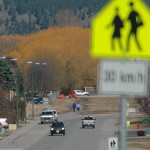Home »

ALR protection created for cannabis production
Local and First Nations governments in British Columbia are now able to prohibit cannabis production in the Agricultural Land Reserve (ALR) within their communities, unless it is grown in ways that preserve the productive capacity of agricultural land.
This regulatory change, effective immediately, gives authority to local and Indigenous governments to prohibit cement-based, industrial-style, cannabis-production bunkers on ALR land in their communities, while clarifying that cannabis production in the ALR cannot be prohibited if grown lawfully:
- in an open field;
- in a structure that has a soil base;
- in a structure that was either fully constructed or under construction, with required permits in place, prior to July 13; or
- in an existing licensed operation.
The regulation allows local governments and First Nations to prohibit the altering of existing structures to increase the size or material used as the base of the structure, and applies, or will apply, to licensed medical and non-medical cannabis facilities in the ALR, a July 13 Ministry of Agriculture press release outlined.
The new framework allows local and First Nations governments to make decisions regarding cannabis production that align with local planning and priorities in their communities.
The regulatory change pertains only to land in the ALR. Local and First Nations governments can regulate or prohibit cannabis production on lands outside of the ALR.
Once the federal Cannabis Act comes into force on Oct. 17, the federal government has announced it will allow cannabis producers to grow cannabis in open fields, greenhouses and industrial bunkers.
There is no biological difference between a cannabis plant grown for medical or for non-medical purposes, the Ministry of Agriculture pointed out.
e-KNOW







